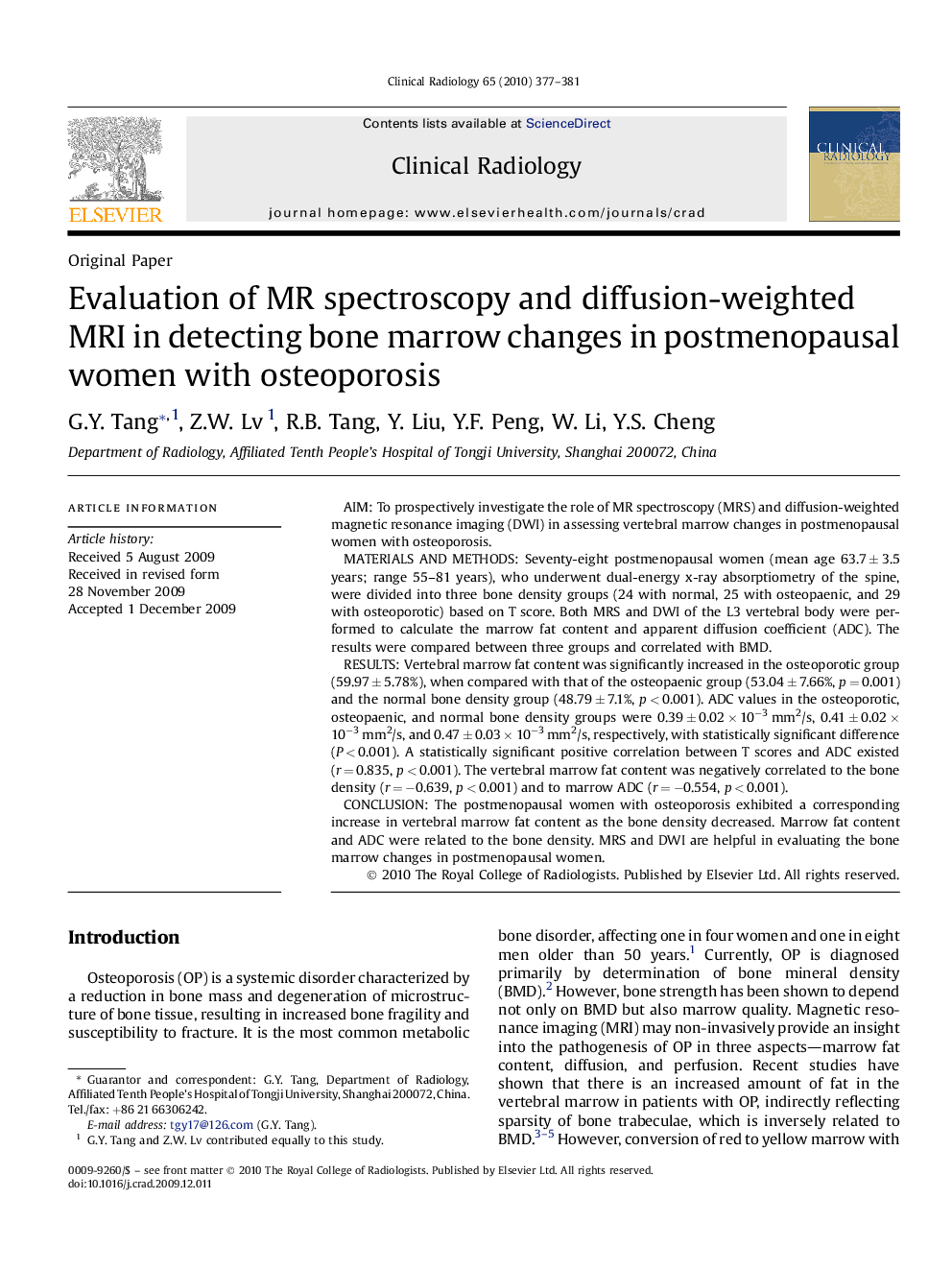| Article ID | Journal | Published Year | Pages | File Type |
|---|---|---|---|---|
| 3982533 | Clinical Radiology | 2010 | 5 Pages |
AimTo prospectively investigate the role of MR spectroscopy (MRS) and diffusion-weighted magnetic resonance imaging (DWI) in assessing vertebral marrow changes in postmenopausal women with osteoporosis.Materials and methodsSeventy-eight postmenopausal women (mean age 63.7 ± 3.5 years; range 55–81 years), who underwent dual-energy x-ray absorptiometry of the spine, were divided into three bone density groups (24 with normal, 25 with osteopaenic, and 29 with osteoporotic) based on T score. Both MRS and DWI of the L3 vertebral body were performed to calculate the marrow fat content and apparent diffusion coefficient (ADC). The results were compared between three groups and correlated with BMD.ResultsVertebral marrow fat content was significantly increased in the osteoporotic group (59.97 ± 5.78%), when compared with that of the osteopaenic group (53.04 ± 7.66%, p = 0.001) and the normal bone density group (48.79 ± 7.1%, p < 0.001). ADC values in the osteoporotic, osteopaenic, and normal bone density groups were 0.39 ± 0.02 × 10−3 mm2/s, 0.41 ± 0.02 × 10−3 mm2/s, and 0.47 ± 0.03 × 10−3 mm2/s, respectively, with statistically significant difference (P < 0.001). A statistically significant positive correlation between T scores and ADC existed (r = 0.835, p < 0.001). The vertebral marrow fat content was negatively correlated to the bone density (r = −0.639, p < 0.001) and to marrow ADC (r = −0.554, p < 0.001).ConclusionThe postmenopausal women with osteoporosis exhibited a corresponding increase in vertebral marrow fat content as the bone density decreased. Marrow fat content and ADC were related to the bone density. MRS and DWI are helpful in evaluating the bone marrow changes in postmenopausal women.
